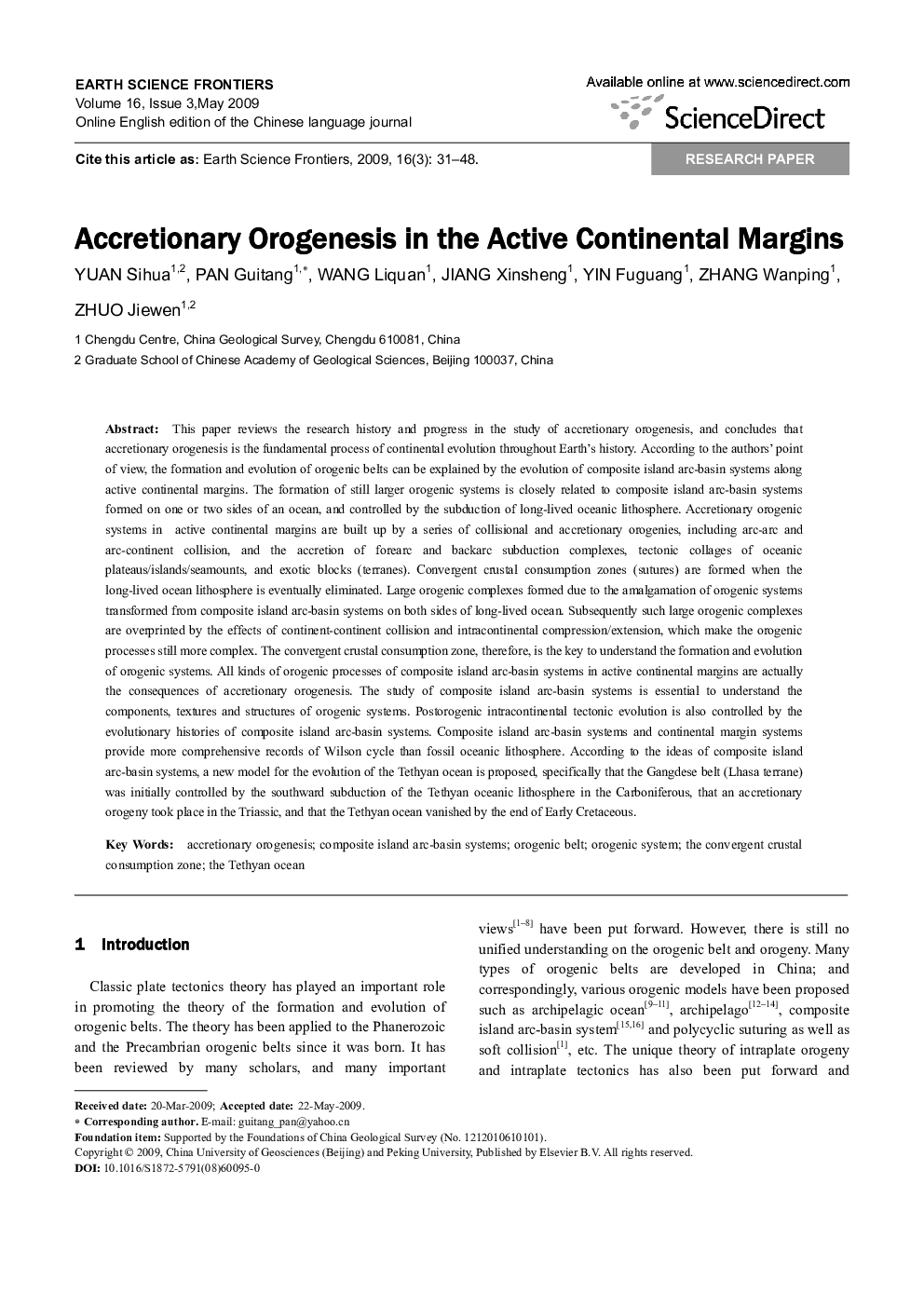| Article ID | Journal | Published Year | Pages | File Type |
|---|---|---|---|---|
| 4701511 | Earth Science Frontiers | 2009 | 18 Pages |
This paper reviews the research history and progress in the study of accretionary orogenesis, and concludes that accretionary orogenesis is the fundamental process of continental evolution throughout Earth's history. According to the authors' point of view, the formation and evolution of orogenic belts can be explained by the evolution of composite island arc-basin systems along active continental margins. The formation of still larger orogenic systems is closely related to composite island arc-basin systems formed on one or two sides of an ocean, and controlled by the subduction of long-lived oceanic lithosphere. Accretionary orogenic systems in active continental margins are built up by a series of collisional and accretionary orogenies, including arc-arc and arc-continent collision, and the accretion of forearc and backarc subduction complexes, tectonic collages of oceanic plateaus/islands/seamounts, and exotic blocks (terranes). Convergent crustal consumption zones (sutures) are formed when the long-lived ocean lithosphere is eventually eliminated. Large orogenic complexes formed due to the amalgamation of orogenic systems transformed from composite island arc-basin systems on both sides of long-lived ocean. Subsequently such large orogenic complexes are overprinted by the effects of continent-continent collision and intracontinental compression/extension, which make the orogenic processes still more complex. The convergent crustal consumption zone, therefore, is the key to understand the formation and evolution of orogenic systems. All kinds of orogenic processes of composite island arc-basin systems in active continental margins are actually the consequences of accretionary orogenesis. The study of composite island arc-basin systems is essential to understand the components, textures and structures of orogenic systems. Postorogenic intracontinental tectonic evolution is also controlled by the evolutionary histories of composite island arc-basin systems. Composite island arc-basin systems and continental margin systems provide more comprehensive records of Wilson cycle than fossil oceanic lithosphere. According to the ideas of composite island arc-basin systems, a new model for the evolution of the Tethyan ocean is proposed, specifically that the Gangdese belt (Lhasa terrane) was initially controlled by the southward subduction of the Tethyan oceanic lithosphere in the Carboniferous, that an accretionary orogeny took place in the Triassic, and that the Tethyan ocean vanished by the end of Early Cretaceous.
